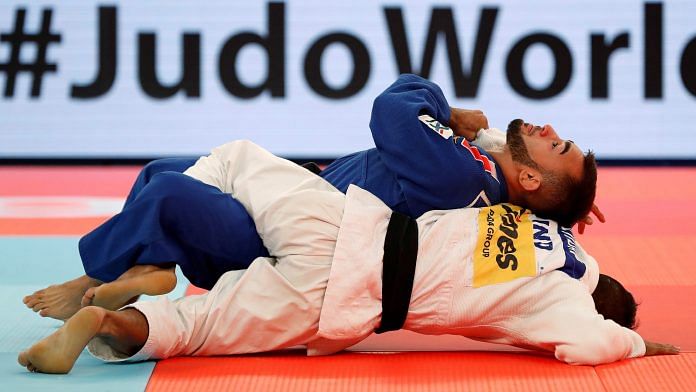
Thank you dear subscribers, we are overwhelmed with your response.
Your Turn is a unique section from ThePrint featuring points of view from its subscribers. If you are a subscriber, have a point of view, please send it to us. If not, do subscribe here: https://theprint.in/
The Olympics just got finished, and although the country is still celebrating, the sad reality will settle in. In months, the Olympics will be forgotten. It’s the reality. We should accept it. However, we shouldn’t be constrained by it. That got me thinking, ‘How should we look at sports?’
Countries have different approaches to Olympic sports. The most common approach could be called as socialist-driven sports system (SDSS). Countries like the old Soviet bloc, today’s China, and to some extent, India are SDSS example. In SDSS, governments are intensively involved in sports. They become the largest sports sponsor. They provide jobs for athletes. They also run most of the facilities and organisations. SDSS are efficient. As demonstrated by Project 119 from China, which took the nation from no participation to the top of the Olympics.
However, for systemic reasons, SDSS also leads to adverse effects. Border-line cruel training of young gymnasts in China are well known. Furthermore, the SDSS fail in sustainable impact. SDSS countries are predominantly performance-driven while ignoring complex goals. For example, Indian government provides players with a sports performance-based job without asking if the performance will really improve their capability at the job.
The other well-known sports system could be called as commercially driven sports system (CDSS). India’s cricket and Europe’s football are CDSS examples. Everyone involved in CDSS makes their living through sport. Ideally, we would like every sport to be CDSS. But that’s just wishful thinking. Around the globe, only a few sports are commercially viable. That’s just the market logic. In CDSS, sports become products, and in free market, not all products get the same price. In fact, some products even become absolute. Thus, although commercialisation is good, we should think beyond it. One answer could be found in the history of Judo and how it transformed the Japanese education system (JES).
History of Judo in JES
The 19th century Maiji revolution put Japan on a modernisation path, moving people away from old practices. People weren’t interested in martial arts anymore. Jigoro Kano, the inventor of Judo, was from this era.
Kano was a martial art practitioner and modern educationalist. He understood that combating days were over. But he also recognised the educational values of martial arts. Thus, Kano undertook a quest to convert traditional martial-arts into something appropriate for the new-era. He combines multiple martial-arts into single practice: Kodokan-Judo. The hazardous technics were removed to make Judo non-lethal. A training approach was developed to minimise injuries.
Kano focused on making Judo a part of JES. He wanted Judo to be a laboratory for practical implementations of fundamental skills. Thus, he emphasised students managing and maintaining the training centres by themselves. Students are also expected to plan and organise competitions. Kodokan-Judo competitions are complementary to larger education. In competitions, a team’s performance takes precedence over an individual. Also, the managers, strategists play vital roles in successful competition.
Kano’s Judo culture is extensively adapted by modern JES. In Japan, university sports clubs are entirely run by the students, who manage and maintain resources, organise and plan training and competitions. They are encouraged to run the clubs as professional institutes without any administrative interference.
As a result, students develop skills beyond sport. They develop skills for planning, managing, organising and collaborating. Naturally, when university teams generate results (a world-class performance), it attracts the employers’ attention. Most Japanese employers look for students who managed university clubs. They prefer experience in sports clubs over academics. What makes JES sport culture so brilliant is that it provides world-class skill-building opportunities for others while creating world-class sportspersons.
Now there might be readers saying, “sports in India do the same, don’t they?” The answer is, “No”. In Japan, the system is built with purpose. It’s not a coincidence that Japanese sports clubs are run by students. Also, the final product matter. Most Japanese universities produce world-class performance. In India, it’s rare.
What can we learn from the Japanese system?
Like Kano, start with the question, ‘How can sports enhance education?’ And avoid shallow answers like ‘sports are for health or enjoyment’. Take hints from the Japanese system. Sports can be laboratories to learn and hone fundamental skills. Remember winning is essential. But we should also make the journey a significantly valuable learning experience. At a practical level, we can establish collaboration between different educational institutes. For example, connecting IIMs with SAI will allow IIM students to bring management and analytical skills to sports, simultaneously giving students exposure to the larger world.
I hope one day Indian sportsperson will transfer their skills to the professional world. That will be the day when India will celebrate sports for the values they create.
Also read: SubscriberWrites: Why the profession of comedy gets a nomination in 2021 edition of Dirty Jobs
These pieces are being published as they have been received – they have not been edited/fact-checked by ThePrint.

COMMENTS